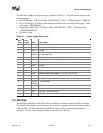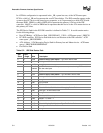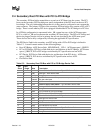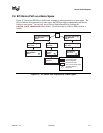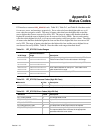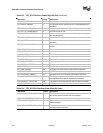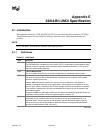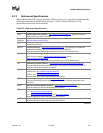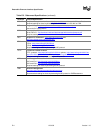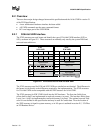
Version 1.10 12/01/02 E-1
Appendix E
32/64-Bit UNDI Specification
E.1 Introduction
This appendix defines the 32/64-bit H/W and S/W Universal Network Driver Interfaces (UNDIs).
These interfaces provide one method for writing a network driver; other implementations are
possible.
NOTE
This is the Beta-1 version of the 32/64-bit UNDI Specification.
E.1.1 Definitions
Table E-1. Definitions
Term Definition
BC BaseCode
The PXE BaseCode, included as a core protocol in EFI, is comprised of a simple network stack
(UDP/IP) and a few common network protocols (DHCP, Bootserver Discovery, TFTP) that are
useful for remote booting machines.
LOM LAN On Motherboard
This is a network device that is built onto the motherboard (or baseboard) of the machine.
NBP Network Bootstrap Program
This is the first program that is downloaded into a machine that has selected a PXE capable
device for remote boot services.
A typical NBP examines the machine it is running on to try to determine if the machine is
capable of running the next layer (OS or application). If the machine is not capable of running
the next layer, control is returned to the EFI boot manager and the next boot device is selected.
If the machine is capable, the next layer is downloaded and control can then be passed to the
downloaded program.
Though most NBPs are OS loaders, NBPs can be written to be standalone applications such as
diagnostics, backup/restore, remote management agents, browsers, etc.
NIC Network Interface Card
Technically, this is a network device that is inserted into a bus on the motherboard or in an
expansion board. For the purposes of this document, the term NIC will be used in a generic
sense, meaning any device that enables a network connection (including LOMs and network
devices on external busses (USB, 1394, etc.)).
continued



